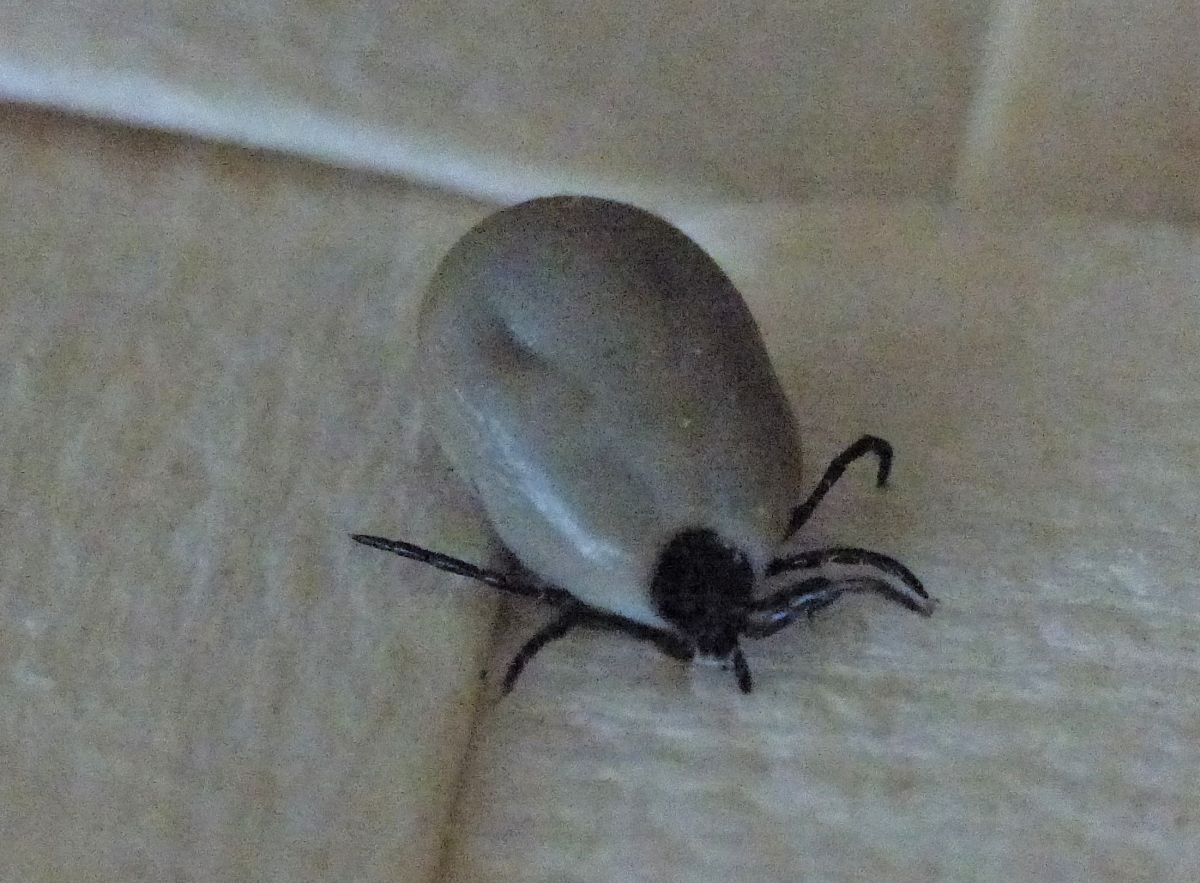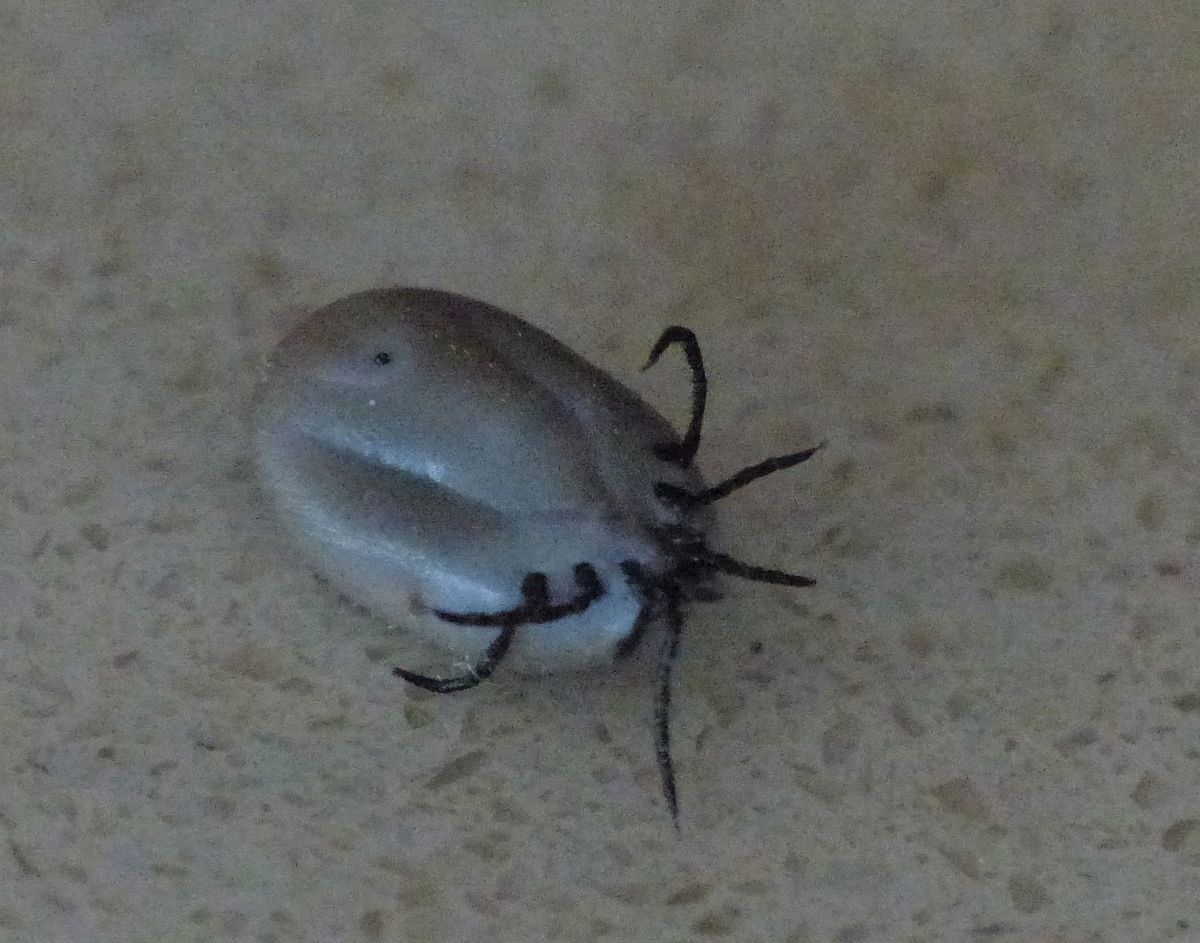February 27
2018 February 27
Our contributors are making sure that Invert Alert remains in business during the winter. Today, thanks to Jochen Moehr who sends us a couple of interesting pictures of a tick taken from his dog in Metchosin. And thanks to Janet Sperling of the University of Alberta, who writes: “The tick from Vancouver Island is an Ixodes but I’d need to see the specimen to know which species. The shape of the scutum suggests I. pacificus. At this time of year, the most common species from Vancouver Island would be Ixodes pacificus but I’d need to see the mouthparts to be sure.”
Jeremy Tatum remarks: To my untutored eye this didn’t look much like the Ixodes pacificus shown by Thomas Barbin on June 22, so I asked Dr Sperling about the two ticks. She replied: Both ticks appear to be Ixodes pacificus. The black scutum with red ‘abdomen’ = ‘idiosoma’ is the unfed form of the tick. When the tick feeds, it will feed over several days. There are many hormonal changes so the idiosoma can stretch as the tick feeds. The colour of the cuticle changes. It makes sense that the black and red photo was found crawling around (looking for a meal) while the other tick had been feeding on a dog. Another interesting thing about hard ticks is that they don’t excrete the fluid portion of the blood out the back end. They re-inject the fluid part of the blood into the host which is why they’re so effective at transmitting diseases.


Tick (upperside) Ixodes (probably pacificus) (Acari: Ixodidae) Jochen Moehr


Tick (underside) Ixodes (probably pacificus) (Acari: Ixodidae) Jochen Moehr
